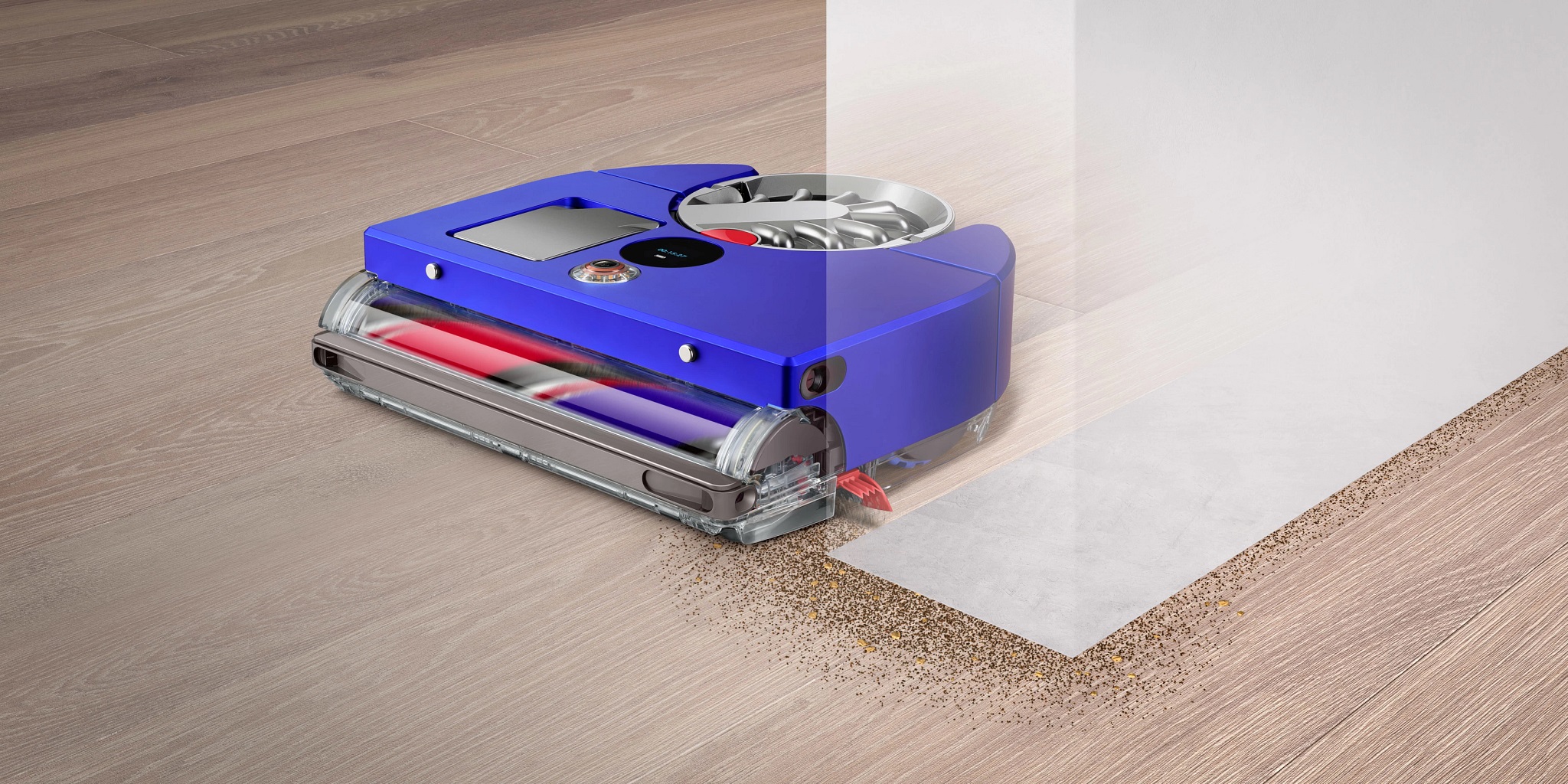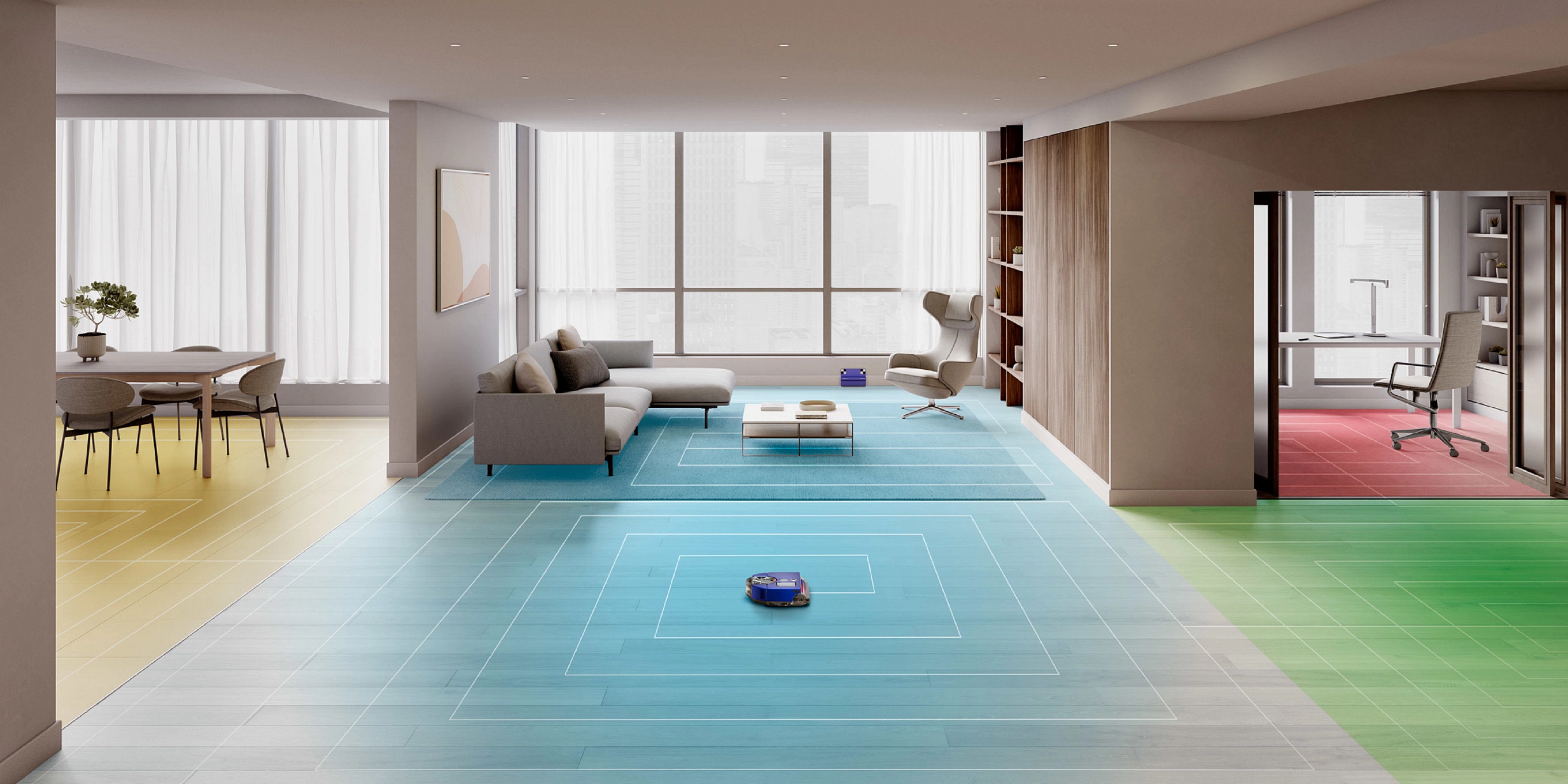
We've had to wait three years for Dyson's new robot vacuum cleaner to be researched, developed, engineered, manufactured and tested – and fortunately, I think it's been worth the wait.
The new Dyson 360 Vis Nav builds on the considerable talents of its predecessor, the 360 Heurist, and adds some useful upgrades. It's also curiously missing some features, including self-emptying and self-cleaning, which we've come to expect from these high-ticket devices. But on balance, I think it's an exciting new alternative to iRobot's top models.
The 360 Vis Nav's biggest upgrade is suction power. It apparently has around six times the suction of some of the best robot vacuums around, thanks to the Dyson Hyperdymium motor.
That motor spins at up to 110,000rpm to deliver an impressive sweep across your floors. That's quite an upgrade from the 78,000rpm produced on the Dyson 360 Heurist from 2020, which our review praised for its "'exceptional cleaning power".
As you'd hope after a three-year wait, the 360 Vis Nav has other new tricks, too. It features Dyson’s first brush bar to combine three ways to deep clean: soft ‘Fluffy’ nylon for large debris pick up on hard floors; anti-static carbon fibre filaments for fine dust pick up on hard floors; and stiff nylon bristles to dig into carpets.
This wide-diameter brush bar has apparently been engineered to reduce tangling, which should make it ideal for homes with long and short-haired inhabitants. The HEPA filtration also promises to capture dust and seal in 99.99% of particles as microscopically small as 0.1 microns – the size of pet dander and diesel soot.
We know there are many frustrations with current robot vacuum cleaners – some have low suction power, or inefficient navigation systems which that they often get stuck and don’t do a proper job of vacuuming. Dyson Engineers have focused on developing machines that overcome these challenges and which increasingly anticipate our needs, understand its environment and operate autonomously.
Jake Dyson, Chief Engineer
But while new features are always nice, I think the 360 Vis Nav has retained the best bits from its Dyson 360 Heurist predecessor. These include 360-degree vision, compatibility with the Dyson app, and voice controls.
That 360-degree vision, which helps the robo-vac see where to clean and remember where it's been, promises to be particularly useful for homes filled with furniture and breakables. Its processor rapidly maps and remembers where the Dyson 360 Vis Nav been and 26 sensors ensure obstacle avoidance. It also has a Piezo sensor which detects, reacts and monitors changes in dust levels 15,000 times a second to automatically increase (or decrease) the suction power.
Naturally, the 360 Vis Nav is also compatible with the MyDyson app, which can be used to create and customize zones, schedule cleans, and set routines. This app can also display deep cleaning reports which map dust hotspots throughout your home – it'll then automatically increasing suction power when needed.
It can also be controlled by voice thanks to its integration with Amazon Alexa and Google Assistant.
Worth the wait?

Three years is a long time in consumer tech and the Dyson 360 Vis Nav is evidently a big step up from the 360 Heurist. But despite those big claims about suction power, I'll remain sceptical until I see the proof in my carpets.
The iRobot Roomba Combo J7 Plus holds position #1 in our robot vacuum cleaner round-up, and in testing we were really impressed by the dirt and dust pick-up. iRobot are amongst those at the top of the league for robot vacuum cleaners – it does specialize in robot vacs, after all – so I think that they may take some beating in terms of suction.
It is also worth noting again that there's no self-emptying or self-cleaning option on the Dyson 360 Vis Nav, which are features we've come to expect from the top robot vacuums. We also don't yet know its price or release date.
But while the Dyson 360 Vis Nav won't be the first powerful robot vacuum cleaner to grace our floors (they've been around for a number of years), I am genuinely looking forward to seeing just how good it is for the carpets and hard flooring throughout my home.
It'll be available to buy first in Australia, and the US and UK thereafter. I'll update this story as soon as we find out that all-important price and release date.







